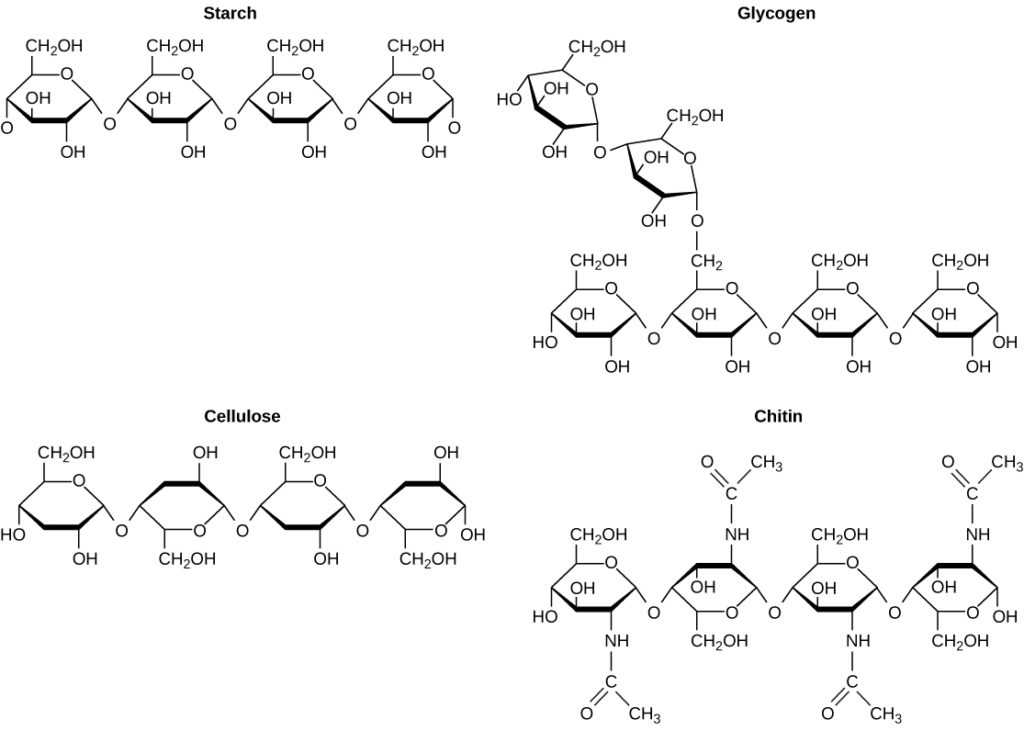
In living systems, various substances form the foundation of structure and function, driving the complex processes necessary for life. These vital materials play a crucial role in maintaining cellular integrity, energy flow, and genetic information transfer.
Each biological unit relies on a diverse set of compounds to perform essential tasks. From providing structural support to enabling chemical reactions, these compounds work in harmony to sustain life. Their interaction within cells is both dynamic and intricate, influencing growth, development, and overall functionality.
The balance of these fundamental components determines the health and efficiency of living systems. Disruptions to their availability or functionality can lead to imbalances that impact overall well-being. Understanding the roles these substances play provides insight into the core of life processes.
Understanding the Basics of Elements in Organisms
At the heart of all living systems lie a set of fundamental substances that are crucial for survival. These materials serve as the building blocks for complex structures, enabling a wide array of biochemical processes essential for life. Without these core substances, life as we know it would be impossible.
Each of these basic components plays a specific role in the functioning of cells. Some provide structural integrity, while others are involved in energy production or support the transmission of genetic information. The precise balance of these substances is critical to maintain the health and functionality of living beings.
While these substances may exist in small amounts, their impact is profound. The absence or imbalance of certain compounds can disrupt normal cellular functions, leading to various health issues. Understanding their roles helps shed light on how life thrives and adapts to its environment.
The Role of Carbon in Life Forms
Carbon is a cornerstone of all living beings, serving as the primary foundation for the creation of complex molecules that drive life processes. It is the key element that allows the formation of structures like proteins, lipids, and nucleic acids, all of which are essential for cellular function and growth.
Carbon as the Building Block of Life
Carbon’s unique ability to form stable bonds with a variety of other atoms enables it to create an almost limitless array of compounds. These compounds are central to energy storage, cell structure, and genetic coding. Carbon atoms bond in different configurations, creating molecules that perform specific tasks necessary for the survival of living beings.
The Importance of Carbon in Energy Transfer
In addition to structural roles, carbon is vital for the transfer of energy within cells. Organic compounds, such as carbohydrates and fats, store energy that is later used for vital processes like growth, repair, and reproduction. Without carbon-based molecules, energy transfer would be inefficient, and life processes could not occur.
How Nitrogen Contributes to Biological Systems
Nitrogen plays a critical role in sustaining life by being a key component of many biological structures. This element is essential for building the complex molecules that power various cellular processes. Without it, critical functions such as protein synthesis and genetic information transfer could not take place.
The Role of Nitrogen in Protein Formation
Proteins, which are fundamental to the structure and function of cells, rely heavily on nitrogen. This element is incorporated into amino acids, the building blocks of proteins. The presence of nitrogen allows proteins to form complex structures that perform vital tasks like enzyme catalysis and immune responses.
Nitrogen’s Contribution to Genetic Material
In addition to proteins, nitrogen is a key part of nucleic acids, such as DNA and RNA. These molecules store and transmit genetic information, guiding the growth, development, and reproduction of life forms. The nitrogenous bases in DNA and RNA allow the encoding of genetic instructions necessary for life.
- Nitrogen in DNA: Forms part of the genetic code, enabling inheritance and cell division.
- Nitrogen in RNA: Plays a role in protein synthesis and gene expression.
Without nitrogen, the intricate systems of molecular signaling and genetic transmission would cease to function, leading to a breakdown in the organization and growth of cells.
Oxygen and Its Vital Functions in Organisms
Oxygen is a crucial element that sustains life by enabling key processes within cells. It is involved in energy production, respiration, and the maintenance of many essential biochemical functions. The role of oxygen extends far beyond simple respiration, as it contributes to the overall vitality and functioning of biological systems.
Oxygen in Cellular Respiration
One of the most significant functions of oxygen is its involvement in cellular respiration. This process allows cells to extract energy from nutrients, which is essential for growth, repair, and overall function. Oxygen acts as the final electron acceptor in the electron transport chain, a vital part of energy production.
- Facilitates the conversion of glucose into ATP, the cell’s energy currency.
- Supports aerobic respiration, which yields more energy than anaerobic processes.
Oxygen’s Role in Immune Function
In addition to its role in energy production, oxygen is vital for the immune system. White blood cells use oxygen to generate reactive molecules that fight off pathogens. This process enhances the body’s ability to defend itself against infections and promotes overall health.
- Helps immune cells produce reactive oxygen species to attack invaders.
- Supports tissue repair and regeneration after injury or infection.
Oxygen is indispensable for many of the processes that keep living systems functioning, from energy production to immune defense, making it one of the most vital elements for life. Without it, these critical systems would fail, leading to a breakdown of essential functions.
Hydrogen and Its Importance in Metabolism
Hydrogen plays a central role in the biochemical reactions that fuel life processes. It is involved in many metabolic pathways, helping to transfer energy and maintain the balance of chemical reactions within cells. Its versatility allows it to participate in various metabolic processes, making it indispensable for life.
Hydrogen in Energy Production
One of the key functions of hydrogen is its role in energy transfer. It forms part of molecules like ATP, which store and release energy required for cellular activities. During cellular respiration, hydrogen atoms are transferred in the form of protons and electrons, facilitating the production of energy necessary for growth and maintenance.
- Participates in the creation of ATP, the energy currency of cells.
- Transports electrons in the electron transport chain for energy production.
Hydrogen in pH Regulation
In addition to its role in energy production, hydrogen helps maintain the proper pH levels within cells. The concentration of hydrogen ions (protons) affects the acidity or alkalinity of cellular environments. This balance is crucial for ensuring that enzymes and other biochemical processes function optimally.
- Regulates pH levels to support enzyme activity.
- Ensures stable conditions for metabolic reactions to proceed efficiently.
Hydrogen is essential not only for energy metabolism but also for maintaining the chemical equilibrium within cells, ensuring that life processes continue smoothly and efficiently.
The Significance of Phosphorus in Cells
Phosphorus is a critical component for various cellular functions, playing an essential role in energy transfer, structural integrity, and genetic material. This element is involved in several biochemical pathways that are fundamental to life processes, making it indispensable for cell growth and maintenance.
Phosphorus in Energy Transfer
One of the primary functions of phosphorus is in the formation of high-energy molecules such as ATP (adenosine triphosphate). These molecules store energy that is vital for many cellular activities, including muscle contraction, protein synthesis, and cell division. Phosphorus is also involved in the phosphorylation process, which regulates enzymes and cellular functions.
- Forms part of ATP, the primary energy carrier in cells.
- Regulates enzyme activity through phosphorylation.
Phosphorus in DNA and RNA Structure

Phosphorus is a key component of nucleic acids, including DNA and RNA. It is present in the backbone of these molecules, linking nucleotides together. This structural role is crucial for the stability and replication of genetic material, ensuring accurate genetic transmission and cellular function.
- Forms part of the structural backbone of DNA and RNA.
- Supports the storage and transmission of genetic information.
Without adequate phosphorus, cells would be unable to produce or store energy effectively, and the genetic code could not be properly maintained. This highlights its central role in sustaining life at the cellular level.
Sulfur and Its Role in Protein Structure
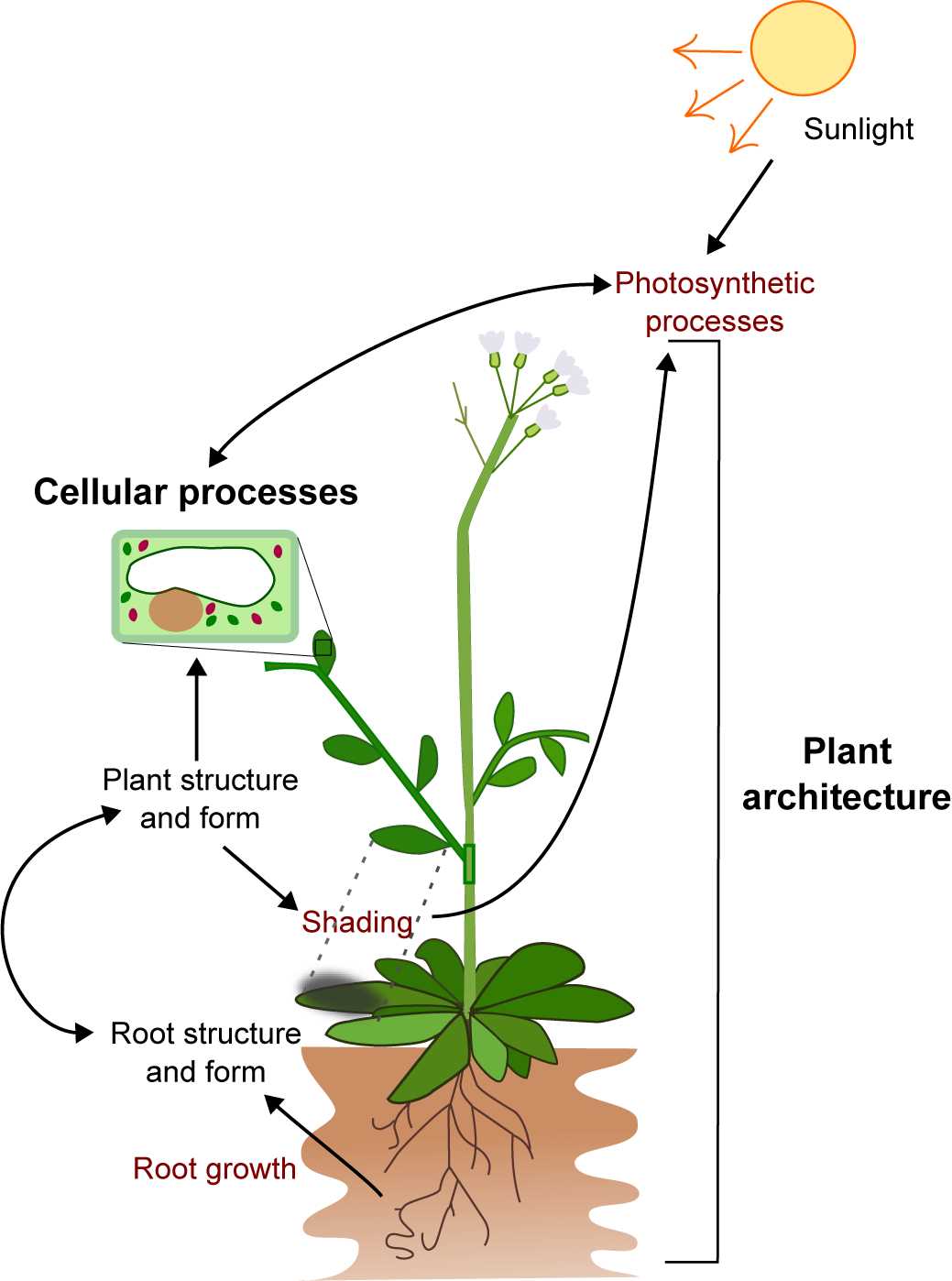
Sulfur plays a vital role in the structure and function of proteins, contributing to their three-dimensional shape and stability. It is involved in forming specific bonds that help proteins fold correctly, which is essential for their biological activity. Without sulfur, many proteins would not achieve the proper conformation needed to perform their functions.
Formation of Disulfide Bridges
Sulfur atoms are crucial in the formation of disulfide bonds, a type of covalent bond that links the sulfur atoms of two cysteine residues in a protein. These bonds stabilize the protein’s tertiary structure by holding parts of the chain together, ensuring the protein maintains its functional shape.
- Disulfide bonds are critical for maintaining protein stability.
- They help proteins resist denaturation by providing structural integrity.
Sulfur in Protein Functionality
Beyond structural stability, sulfur also plays a role in the active sites of enzymes, where it can participate in catalysis. In some proteins, sulfur-containing compounds are involved in the transfer of electrons, which is essential for various biochemical reactions.
- Sulfur helps form active sites in enzymes that catalyze biochemical reactions.
- It participates in electron transfer processes, which are crucial for cellular metabolism.
In summary, sulfur is an indispensable component for ensuring that proteins adopt the correct shape and function effectively within living systems. Its ability to form stable bonds and participate in catalytic processes underscores its importance in molecular biology.
Trace Elements Essential for Life
Certain elements, although present in very small amounts, are vital for maintaining life processes. These trace substances play crucial roles in a wide variety of biochemical functions, supporting growth, immunity, and overall health. Despite being required in tiny quantities, their impact on cellular functions and metabolic pathways is profound.
Iron and Its Role in Oxygen Transport
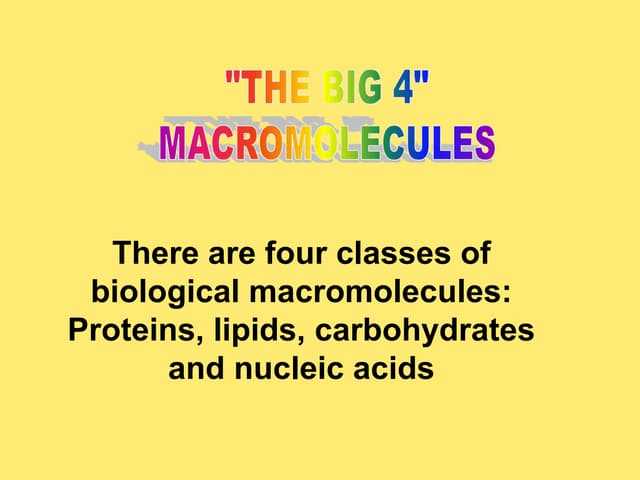
Iron is one of the most important trace components, primarily involved in oxygen transport within the body. It forms the core of hemoglobin, the protein responsible for carrying oxygen in the blood. Without iron, the body would be unable to effectively deliver oxygen to tissues, leading to fatigue and weakened organ function.
- Iron is essential for the production of hemoglobin.
- It aids in the transport of oxygen to various tissues in the body.
Zinc in Enzyme Function and Immunity
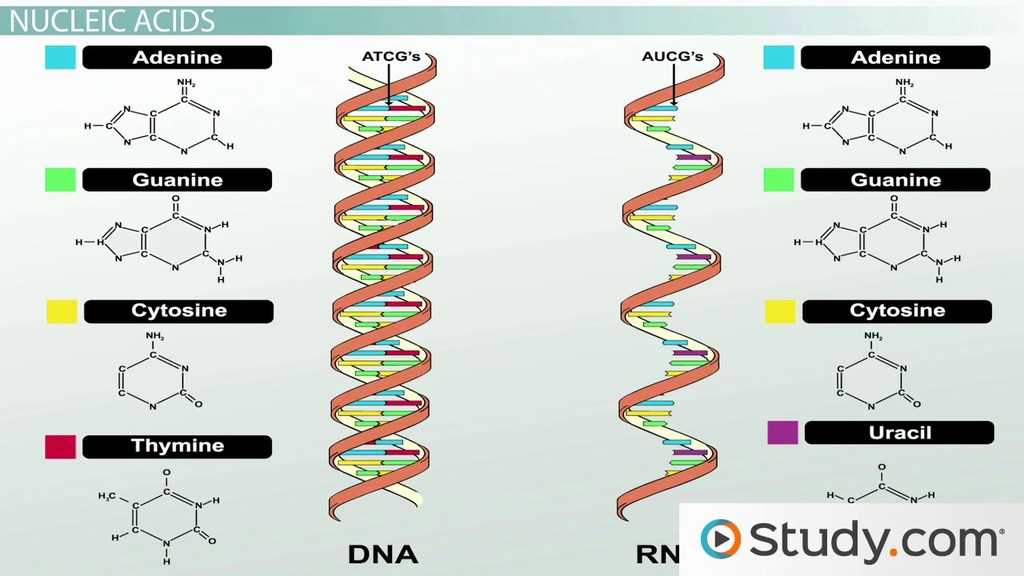
Zinc is another essential trace component, involved in hundreds of enzymatic reactions throughout the body. It is critical for maintaining a healthy immune system, DNA synthesis, and protein production. Zinc also plays a role in wound healing and the regulation of cell division.
- Zinc is vital for enzyme function, aiding in metabolic processes.
- It supports immune responses and cellular repair.
Although these trace substances are needed in small amounts, their absence or deficiency can result in serious health issues. They are indispensable for maintaining the delicate balance of life processes at the cellular level.
What Are Macromolecules and Their Functions?
Large, complex molecules play a pivotal role in sustaining life by supporting a variety of cellular activities. These substances are composed of smaller units that join together in intricate arrangements to form structures necessary for the functioning of living systems. Their diversity in size and structure allows them to participate in virtually every biological process, from energy storage to genetic information transmission.
Proteins: The Building Blocks of Life
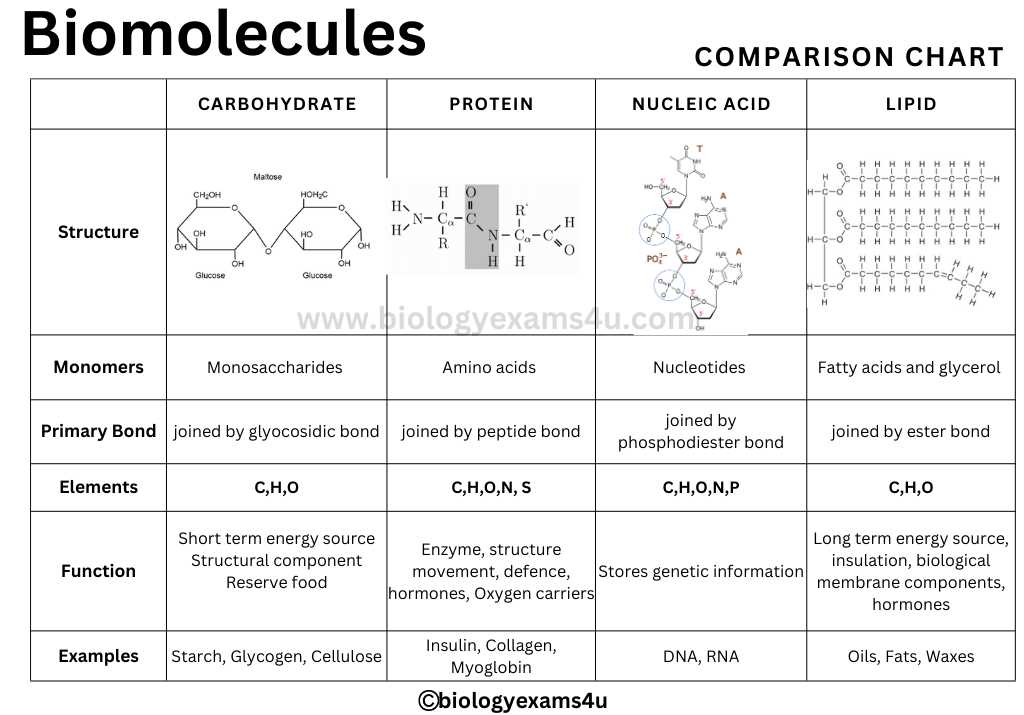
Proteins are among the most important biological compounds, involved in nearly every aspect of cellular function. They are made up of chains of amino acids, which fold into specific shapes to perform tasks such as catalyzing chemical reactions, transporting molecules, and providing structural support. Enzymes, antibodies, and muscle fibers are all examples of protein-based structures.
- Proteins catalyze metabolic reactions as enzymes.
- They provide structural support, such as in muscles and skin.
Carbohydrates: Energy Storage and Structure
Carbohydrates are crucial for energy storage and immediate energy supply. These molecules are made up of sugar units, which can be linked together to form larger compounds. Carbohydrates serve not only as a source of fuel but also provide structural integrity in certain organisms, such as in plant cell walls.
- Carbohydrates store energy in forms like starch and glycogen.
- They provide structural support in plant cells.
These large, complex molecules are essential for life, driving the biochemical processes that enable growth, repair, and reproduction. Their specific functions depend on their structure and composition, allowing them to fulfill a wide range of critical roles in every living system.
Proteins as Key Building Blocks
Proteins are fundamental components of life, serving as the primary materials from which living structures are formed. These complex molecules are involved in a vast array of biological processes, supporting everything from cellular structure to communication and regulation. Their diverse functions make them indispensable in maintaining the integrity and functionality of all life forms.
Structural Support and Cell Integrity
Proteins provide structural support to cells and tissues, contributing to their shape and strength. For example, collagen, a protein found in connective tissue, provides strength to skin, bones, and tendons. Similarly, keratin plays a key role in forming the protective outer layer of skin, hair, and nails.
- Collagen strengthens bones, skin, and tendons.
- Keratin forms protective layers in skin, hair, and nails.
Enzyme Function and Metabolic Regulation
Many proteins act as enzymes, accelerating biochemical reactions essential for metabolism. These molecules act as catalysts, speeding up chemical reactions that would otherwise occur too slowly to sustain life. From digesting food to producing energy, enzymes are crucial for metabolic processes.
- Enzymes catalyze chemical reactions in metabolism.
- They enable the breakdown of nutrients and synthesis of essential molecules.
In summary, proteins are versatile molecules with structural, regulatory, and catalytic roles that are vital to the survival and function of living systems. Their ability to adapt and perform a wide variety of tasks makes them central to biological processes.
Carbohydrates and Their Energy Role
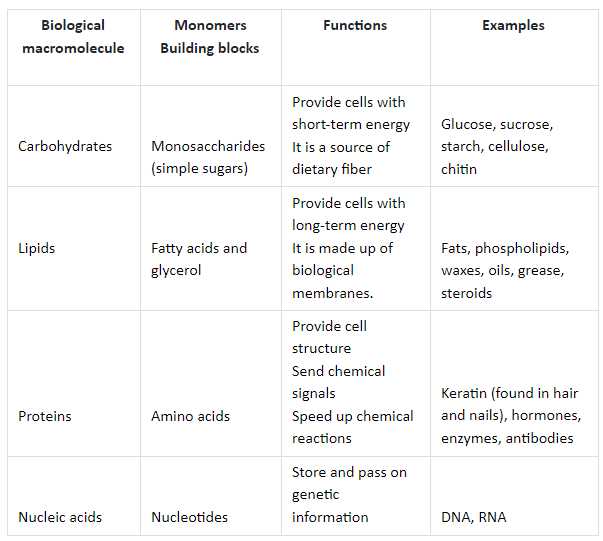
Carbohydrates serve as a primary source of energy in living systems, fueling cellular activities and supporting essential biological processes. These compounds are broken down into simple sugars, which provide the necessary power for everything from muscle movement to brain function. Their role in energy production is vital for maintaining life and enabling growth, repair, and reproduction.
Energy Storage and Release
Carbohydrates are stored in the form of glycogen in animals and starch in plants, acting as energy reserves that can be quickly mobilized when needed. Upon digestion, these reserves are converted into glucose, which cells use to produce energy through processes such as cellular respiration.
| Carbohydrate Type | Storage Form | Energy Source |
|---|---|---|
| Simple Sugars | Quickly used for immediate energy | Glucose |
| Glycogen (in animals) | Stored in liver and muscles | Glucose when needed |
| Starch (in plants) | Stored in roots, stems, and leaves | Glucose when needed |
Supporting Cellular Functions
Besides energy storage, carbohydrates play an important role in cellular structure and function. In certain organisms, carbohydrates are essential components of the cell membrane, where they contribute to communication and recognition processes between cells. This further highlights their importance beyond just energy provision.
In conclusion, carbohydrates are central to the energy cycle in living systems. Their ability to store energy efficiently and provide immediate fuel when needed makes them essential for sustaining life and supporting cellular activities.
Fats and Lipids in Cellular Structures
Fats and lipids are crucial components of cellular structures, playing key roles in maintaining the integrity and functionality of cells. These molecules are primarily involved in forming protective barriers, such as cell membranes, that regulate the passage of substances in and out of cells. Their versatility extends beyond structural support, contributing to energy storage, signaling, and insulation.
Role in Cell Membranes
One of the most vital functions of fats and lipids is their involvement in the formation of phospholipid bilayers, which make up the fundamental structure of cell membranes. This arrangement creates a semi-permeable barrier that controls what enters and exits the cell, ensuring a stable internal environment.
- Phospholipids form the basic structure of the cell membrane.
- Hydrophobic tails of lipids prevent unwanted substances from passing through.
- Hydrophilic heads interact with water, stabilizing the membrane structure.
Energy Storage and Insulation
Fats serve as a dense source of energy, stored in cells in the form of triglycerides. These molecules are released when the body requires additional energy. In addition to providing energy, fats play an insulating role, helping to protect organs and regulate temperature.
- Triglycerides store energy for later use.
- Fat deposits provide cushioning to protect internal organs.
- Fat tissue helps to insulate the body against heat loss.
In summary, fats and lipids are not only structural components of cells but also vital for energy storage, protection, and communication within biological systems. Their multifaceted roles ensure that cells function efficiently and maintain overall health.
Nucleic Acids and Genetic Information
Genetic material is the blueprint for life, containing the instructions necessary for the growth, development, and functioning of all living things. These instructions are encoded in complex molecules that store and transmit information across generations. The primary role of these molecules is to ensure that genetic information is accurately replicated and expressed in every cell.
The Role of Genetic Material
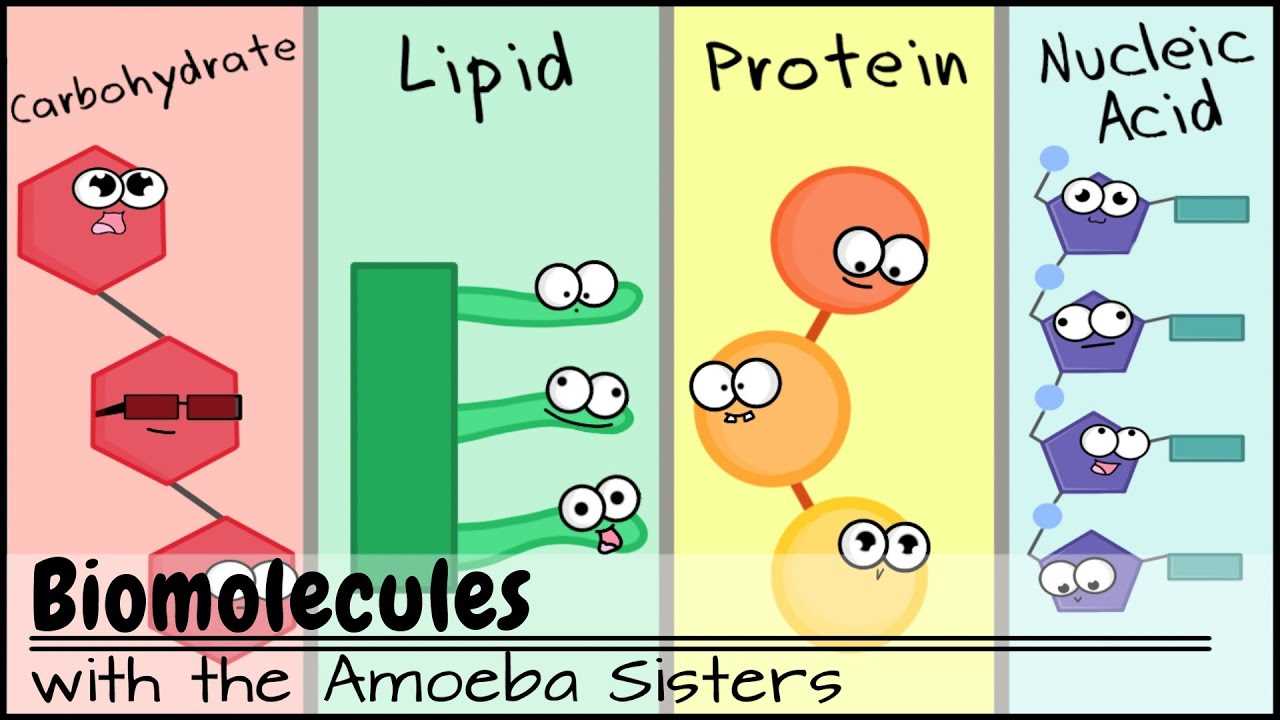
Genetic information is essential for the synthesis of proteins, which perform various tasks in cells. The sequence of nucleotides in these molecules determines the structure and function of each protein, thereby influencing the organism’s traits and capabilities. The information stored within these molecules is passed down from one generation to the next, ensuring the continuity of life.
| Genetic Material | Function | Key Structure |
|---|---|---|
| DNA (Deoxyribonucleic Acid) | Stores genetic instructions for growth and development | Double helix structure |
| RNA (Ribonucleic Acid) | Transmits genetic information for protein synthesis | Single-stranded structure |
Transmission and Replication
During cell division, genetic material is duplicated and distributed to daughter cells, ensuring that each new cell has an identical copy of the original genetic instructions. This process is essential for the continuation of life, allowing organisms to grow and reproduce. Any errors in this replication process can lead to mutations, which may have significant effects on the organism.
In conclusion, nucleic acids are critical for maintaining life, as they store, replicate, and transmit genetic information that controls cellular activities and organismal traits. Their role in ensuring genetic continuity is vital to the persistence of life across generations.
How Macromolecules Interact in Organisms
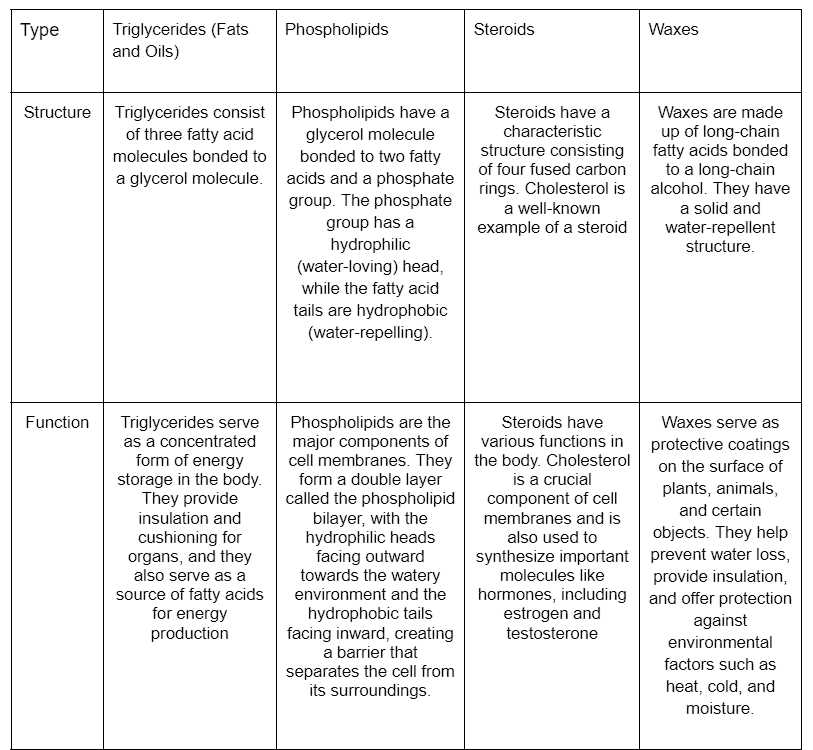
In living systems, large molecules work together to sustain the complex processes required for life. These molecular interactions form the basis of many biological functions, from energy production to cell communication. Their ability to interact with each other allows cells to perform essential tasks such as replication, metabolism, and signal transmission. Understanding these interactions is crucial to unraveling how life maintains its intricate balance.
These large biomolecules often interact in specific, regulated ways. For example, proteins bind to other molecules to perform enzymatic functions or to create structural elements within cells. Carbohydrates may attach to proteins or lipids to form glycoproteins or glycolipids, which are involved in cellular recognition and communication. Similarly, lipids, forming part of the cell membrane, create barriers that protect the cell while enabling communication with its environment.
These molecules do not function in isolation; their interactions are tightly coordinated. For instance, during cellular respiration, proteins and carbohydrates work together to break down glucose and produce energy. Similarly, the DNA in cells interacts with proteins to regulate gene expression, ensuring that the right proteins are made at the right time. In many cases, these interactions are dynamic, with molecules continually binding, unbinding, and changing shape to facilitate different cellular functions.
The ability of these large molecules to interact, bind, and change shapes is essential for the proper functioning of the cell. These interactions are governed by molecular recognition, where the shape and chemical properties of one molecule determine its interaction with another. This specificity is crucial for the accuracy and efficiency of cellular processes, from the breakdown of nutrients to the transmission of genetic information.
In summary, the interaction between large biomolecules is fundamental to sustaining life. These interactions not only enable vital processes but also allow for the regulation and adaptability of cellular systems, ensuring that organisms can respond to changes in their environment and maintain homeostasis.
The Impact of Element Deficiencies on Health
Insufficient amounts of essential nutrients in the body can lead to a wide range of health problems. These nutrients, which are vital for various biological processes, play critical roles in maintaining cellular functions, supporting the immune system, and ensuring energy production. When a deficiency occurs, it can disrupt normal bodily functions, leading to symptoms ranging from mild discomfort to serious health conditions.
For instance, a lack of certain substances can compromise the body’s ability to build and repair tissues, resulting in weakened bones, muscles, and organs. In some cases, deficiencies can affect the ability to produce proteins or enzymes, essential for metabolism and overall cell function. This can lead to issues like fatigue, poor wound healing, and digestive problems.
Moreover, deficiencies can impact the immune system, leaving the body more susceptible to infections. The body’s defense mechanisms may not function optimally without adequate supplies of key nutrients. This can increase the risk of chronic diseases, slow recovery from illnesses, or even affect the body’s ability to fight off infections effectively.
The role of proper nutrition in maintaining health cannot be overstated. The body requires a balanced intake of various nutrients to ensure smooth functioning. Without this balance, imbalances may occur, leading to conditions like anemia, bone disorders, or metabolic dysfunction. Early detection and correction of these deficiencies are vital for long-term health and well-being.
In conclusion, a deficiency in essential nutrients can have far-reaching effects on overall health. Addressing these imbalances through proper nutrition is key to preventing complications and maintaining a healthy, functioning body.
The Role of Enzymes in Metabolism
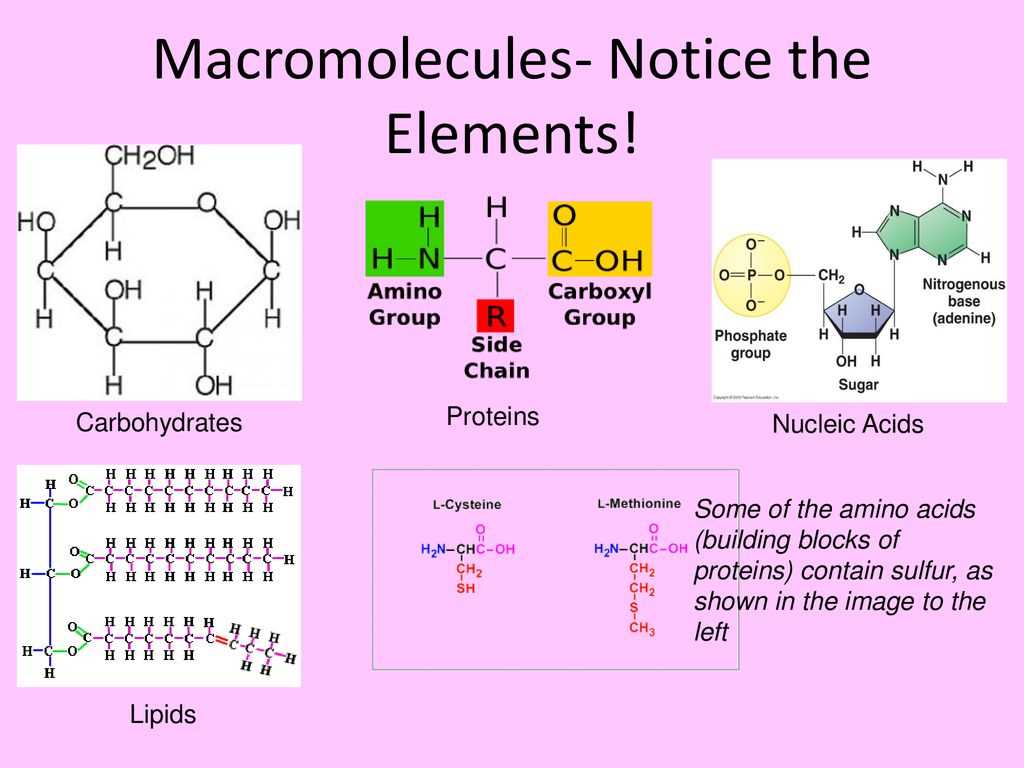
Enzymes are essential proteins that facilitate and accelerate various chemical reactions within living systems. These catalysts are critical to maintaining the biochemical processes that allow cells to perform vital functions, such as energy production, growth, and repair. Without enzymes, many of the reactions necessary for life would occur too slowly to sustain cellular activities.
In metabolism, enzymes act by lowering the activation energy required for biochemical reactions, making them occur more efficiently. This process is essential for both catabolic reactions, which break down molecules for energy, and anabolic reactions, which build complex molecules from simpler ones. The speed and precision of these reactions depend largely on the presence of specific enzymes.
Substrate Specificity
One of the key characteristics of enzymes is their specificity for certain substrates. Each enzyme is designed to interact with a particular molecule or group of molecules, which ensures that metabolic processes occur in the correct sequence. This specificity helps maintain order within cellular activities, preventing unnecessary or harmful reactions.
Regulation of Enzyme Activity
Enzyme function is not constant and can be regulated based on the needs of the cell. Factors like temperature, pH, and the presence of specific inhibitors or activators can influence enzyme activity. In this way, enzymes act as switches to control the speed and occurrence of metabolic pathways, ensuring the cell adapts to changing conditions.
Overall, enzymes are integral to the smooth operation of metabolic processes. Their ability to control and accelerate chemical reactions is essential for sustaining life and enabling organisms to carry out complex physiological functions.
Macromolecule Synthesis and Cellular Growth
Cellular growth and function are driven by the continuous production of complex molecules required for structural integrity, energy storage, and specialized functions. The synthesis of these large molecules is essential for cell division, differentiation, and adaptation to environmental changes. This process allows cells to expand in size and number, contributing to overall tissue development and maintenance.
The Process of Building Large Biomolecules
Building large biomolecules involves intricate biochemical pathways that link smaller subunits into larger structures. These steps are catalyzed by specific enzymes and rely on energy from ATP to drive the formation of bonds between individual units. For example, the synthesis of proteins involves the assembly of amino acids into polypeptide chains, while nucleic acids are formed through the polymerization of nucleotide building blocks.
- Proteins: These are synthesized through transcription and translation processes, where DNA is transcribed into messenger RNA (mRNA), which is then translated into a protein sequence by ribosomes.
- Polysaccharides: These complex carbohydrates are formed by linking sugar molecules through glycosidic bonds, providing cells with energy storage and structural components like cellulose in plant cells.
- Lipids: These large molecules are created through the combination of fatty acids and glycerol, forming structures essential for cellular membranes and energy reserves.
Influence of Cellular Growth on Synthesis
During periods of cellular expansion, such as growth or repair, the demand for these large molecules increases. As cells prepare to divide, they must synthesize enough of these components to support both the parent and daughter cells. This increased demand is regulated by signaling pathways that ensure the synthesis of the necessary biomolecules occurs at the right time and in the required amounts.
- Cell Cycle Regulation: The cell cycle checkpoints ensure that adequate resources are available for the synthesis of required biomolecules before cell division can proceed.
- Growth Factors: External signals, such as hormones or nutrients, influence the rate of synthesis and promote cellular growth, ensuring the proper coordination of these processes.
In summary, the synthesis of large biomolecules plays a critical role in cellular growth. By ensuring the timely and accurate formation of proteins, lipids, carbohydrates, and nucleic acids, cells can grow, divide, and adapt to meet the needs of the organism as a whole.
Exploring the Evolution of Biochemical Systems

The development of biochemical processes has been fundamental to the progression of life forms on Earth. Over millions of years, these systems have evolved to enable the synthesis of essential molecules, energy production, and cellular communication. The adaptation of biochemical pathways to varying environments has played a key role in the complexity and diversity of life.
From Simple Reactions to Complex Networks
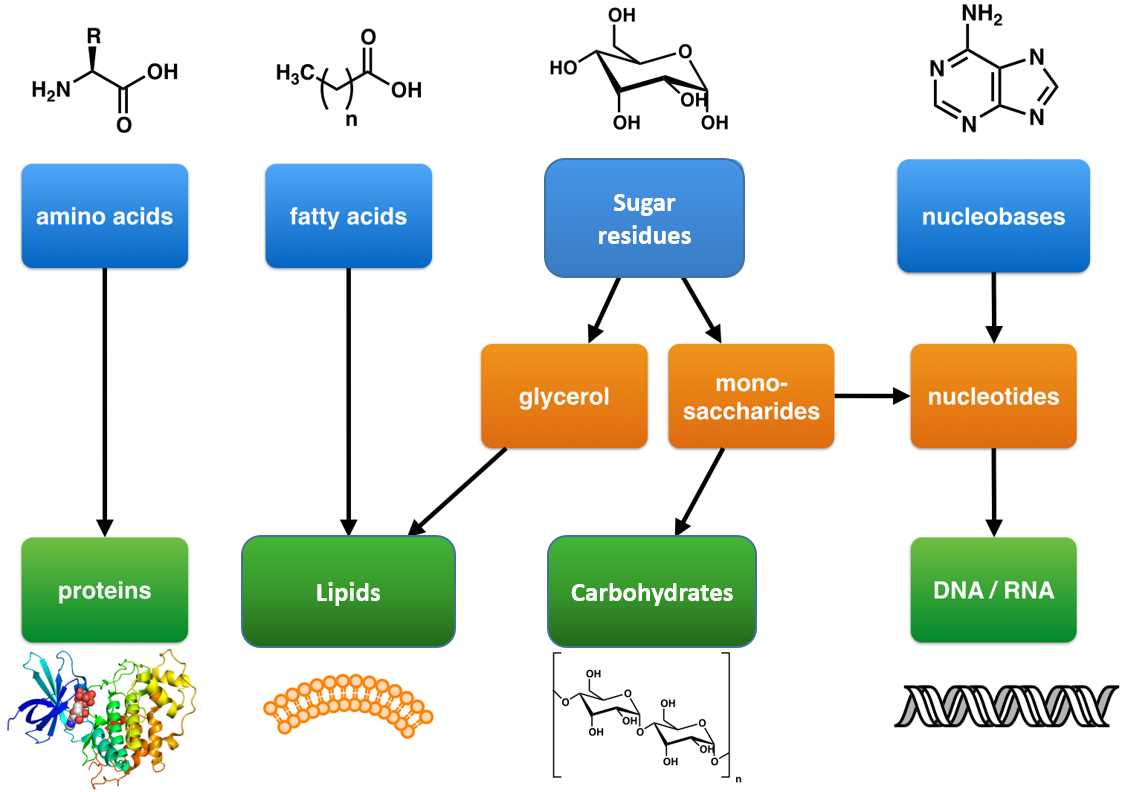
The earliest biochemical reactions likely involved simple molecules interacting in primordial environments. Over time, these basic interactions gave rise to more complex networks, which eventually led to the formation of intricate cellular machinery. This transition was essential for the rise of more advanced metabolic processes, allowing cells to harness energy more efficiently and regulate growth and reproduction.
| Stage | Key Development |
|---|---|
| Early Earth | Simple chemical reactions, primitive metabolism |
| Prebiotic Chemistry | Formation of basic organic molecules (amino acids, nucleotides) |
| Evolution of Enzymes | Development of catalysts to accelerate biochemical reactions |
| Modern Biochemical Systems | Highly regulated networks for energy production, synthesis, and communication |
Adaptive Changes and Environmental Influence
As life evolved, biochemical systems adapted to meet the challenges of various environments. These adaptations enabled organisms to utilize a wide range of resources, cope with changing conditions, and even thrive in extreme habitats. The emergence of complex systems, such as aerobic respiration and photosynthesis, allowed for more efficient energy production, providing a foundation for more diverse life forms to emerge.
In summary, the evolution of biochemical pathways has been a dynamic process, shaped by environmental factors, genetic variations, and the need for survival. These systems, now finely tuned, continue to be a cornerstone of life, facilitating the intricate processes that sustain biological functions.